Thwack! The oar hits the water, sending drops of murky coffee colored water flying. “This should bring the alligators to the boat.” We huddle closer together in our seats, shivering in the cold. Scanning the vegetation rising up from the bayou, we wait for any sign of movement. “The temperature’s keeping them from moving around much,” our guide, Tucker Friedman, tells us as the oar smacks the water again.
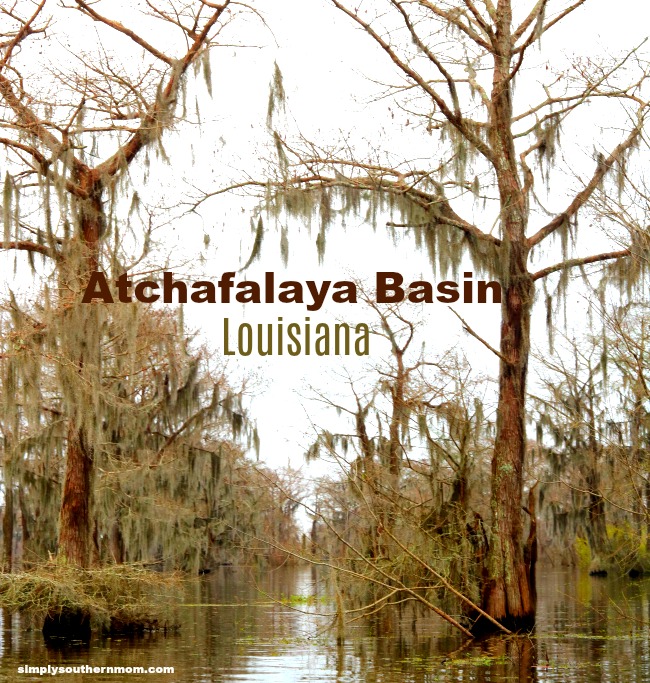
We are sitting on an airboat in the Atchafalaya Basin, located near Simmesport, Louisiana. The nation’s largest swamp, it encompasses almost one million acres of swamps, bayous, and backwater lakes. Tucker, the owner of Basin Landing Airboat Swamp Tours, has been exploring this land since he was a child. “I used to swim with the alligators until the accident,” he says.
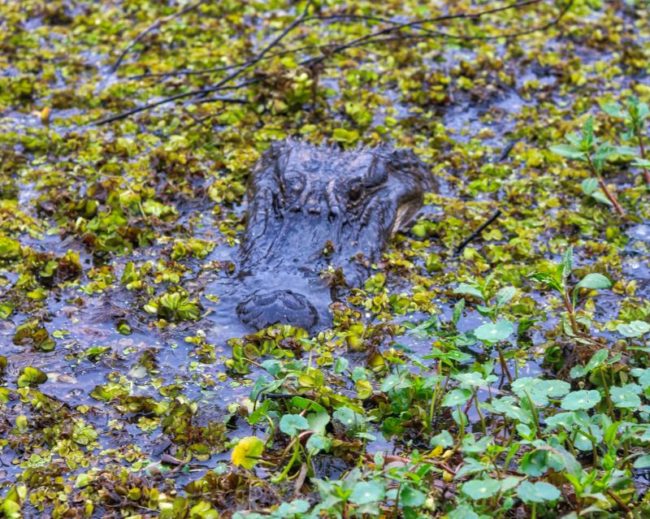
‘The accident’ refers to the time he was swimming in the water with four male alligators. Tucker found himself in the midst of an alligator territorial dispute, receiving a sold whack from the tale of one of the alligators. The blow caused injuries to his vertebrae, his ribs, his teeth, and his jaw. “The passengers had to pull me back onto the boat. I’m still in physical therapy from that.”
With no alligators in sight, Tucker shares information about the vegetation growing around us. He points out the hydrilla, an invasive species that can double every six to fifteen days, choking out fish, native wildlife, and plants. “If you’d seen the swamp even ten years ago, it didn’t look like this.”
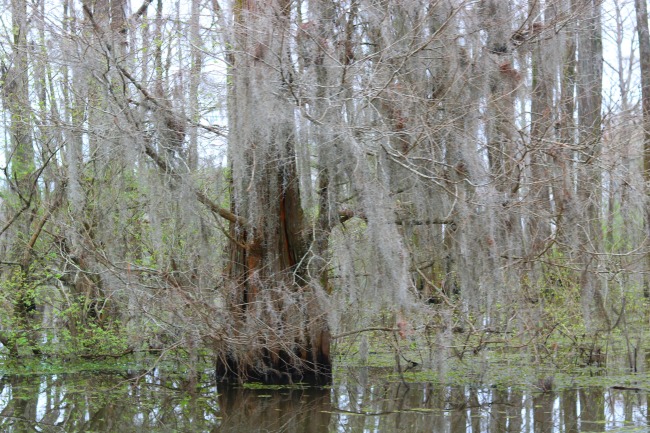
We continue our journey through the swamp as Tucker shares facts about the wealth of wildlife living in the basin. It’s impressive. There are over 65 species of reptiles and amphibians, over 250 known types of birds, and 100 species of fish. The basin is also home to the largest nesting population of bald eagles in the South Central US.
Over the roar of the motor, Tucker stretches out his arm and points to a tree in the distance. “That’s an osprey. She’s guarding her nest.” The boat idles and we drift to a stop. Everyone grabs their cameras as the osprey rises into the air and spreads her wings. “Ipppp! Ipppp! Ipppp!” She circles outward, flying past the boat. “She’s trying to draw us away from her nest,” Tucker explains.
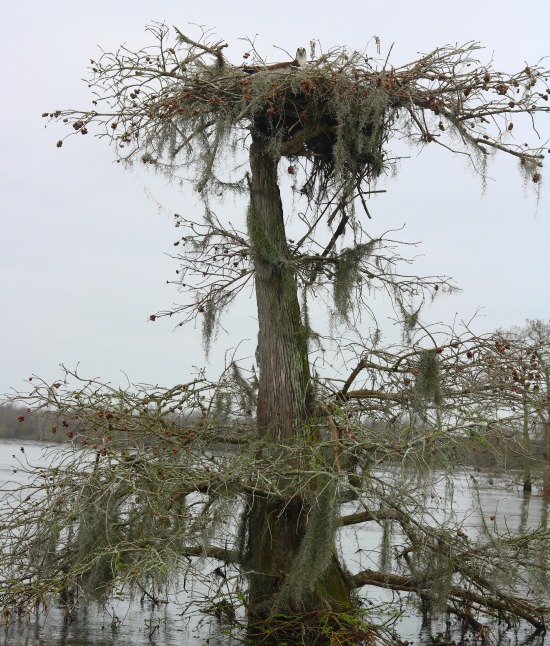
The circling gradually comes to a halt. Apparently deciding we are not a threat, she glides back to her nest, her chatter ceasing. Tucker cranks the motor. We’re venturing deeper into the basin in search of the elusive alligator. We zip along under the Atchafalaya Basin Bridge, a parallel set of bridges, that spans almost twenty miles in length before our boat veers toward the right.
Trees, standing straight as sentinels, rise out of the water on either side of our boat. “That’s cypress. We don’t have many of them here over a hundred years old.” Tucker tells us these trees were once the lifeline for the Cajuns who lived deep in the swamps.
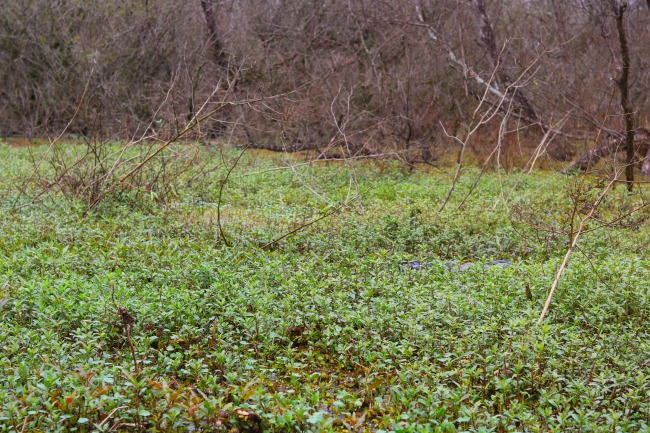
Sought for its resistance to termites and its durability, the wood was cut by two-handled saws and men braced on each side of the massive trunks. It was dangerous, backbreaking work. The risk of dying from an accident or mosquito-borne diseases such as yellow fever or malaria was an ever-present threat. Now a National Heritage Area, the cypress harvests have ceased. The area is inhabited by black bears, raccoons, muskrats, beavers, otters, foxes, and nutria instead of houseboats.
We’ve wandered into an isolated part of the basin. The only sounds are the “mmmpht” of a bullfrog and the water gently lapping at the side of the boat. Someone breaks the silence with an excited whisper, “Look! It’s an alligator!” Tucker strides to the front of the boat.
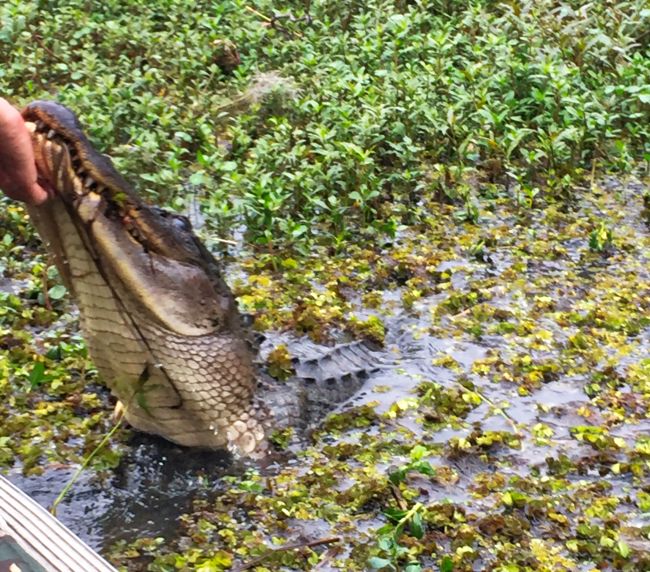
“Marie! Marie! Bonjour, Marie!” Tucker waves a bag of chicken, cut into chunks. “Veux-tu du poulet?” He turns to us. “These alligators only respond to French.” We watch openmouthed as an alligator swims to the edge of the boat, lifting her head above the water. “Comme talle vous, Marie! Voici du poulet!” He leans over and plops some chicken into her open mouth.
“How do you know this is Marie and not some other alligator?” one of the passengers asks. “I’m out here every day. I work with these alligators,” Tucker replies. “This is Marie’s territory.” Marie is a young alligator only a few feet in length. With a nest of babies hidden somewhere nearby, Marie is protective of her space.
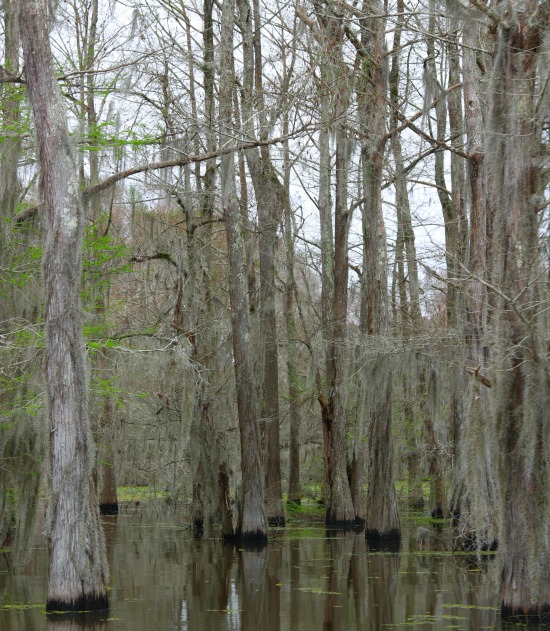
We don’t see Marie’s aggressive nature, however. As we crowd close to the side of the boat, Tucker reaches down and pats Marie on her snout. “Would anyone else like to touch her?” Only one of us is brave enough. Tucker shows how to pet Marie since he wants our comrade to “keep her hand.”
Marie submits to this treatment for several minutes before lowering her snout into the water. She continues to reside silently in the water by the boat, eying us benignly. Only when she is satisfied no more chicken is forthcoming does she silently slice across the water to her former resting spot.
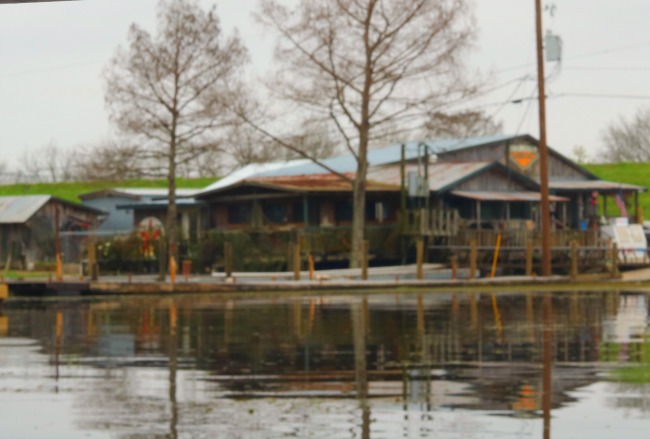
“It’s time to be getting you back,” Tucker says. “You’re probably getting cold.” We glance at each other and realize, in the excitement of finding Marie, we’d forgotten the chilly temperatures. On the way back to the dock no one speaks. The Spanish moss draping from the trees flutters in the wind, waving a gentle goodbye. As I step out of the boat, I turn to gaze at the water winding into the horizon. Serene. Peaceful. I sigh and follow the group back into reality.
You Might Like These Posts:

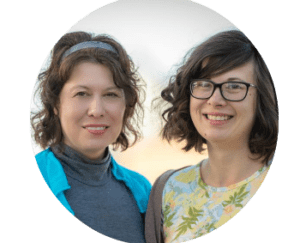

Wow! What a interesting and nice place! I would like to visit it one day!
I have a deep admiration of alligators as such powerful and effective hunters. It would be exhilarating to get close to them in real life
I know every area has its own thing, but I’m glad that we don’t have alligators.
Wow, this looks like a fun place to visit! I don’t know if I’d want to come face to face with either, though!
Wow that’s an amazing experience. I’m quite scared of the alligator though. The swamp looks so serene.
Wow, that sounds like an amazing boating adventure for you. You are so brave on seeing that alligator, me, I will definitely scream once I see that. LOL!
I have always wanted to go on a swamp tour but I have yet to do it. There are so many of them in Florida, Georgia and Louisiana. Looks like you and the family had a wonderful time.
This is something thrilling adventure experience for the whole family and friends.
This is such a thrilling adventure! I think my husband would really like to do a tour like this.
While my husband wouldn’t be up for it, I would love to do a swamp tour and look for gators. I’m sure you’ll remember this experience for many years to come!
I have never been to Louisiana. I have always wanted to go, though. It looks like it has great natural beauty.
Yikes. Too much for me! I get the willies just watching shows where they catch alligators! It looks like you had a wonderful time though!
What a super fun experience! I had an experience like this last time I was in NOLA
This would be so neat to see! My daughter especially loves alligators. My family will have to go here one day.
This looks like a really interesting experience. I’ve never pet an alligator before. It looks like fun.
I can totally see you making all sorts of beautiful pictures down there. I have never been to this part of the country and I have always wanted to go. It looks beautiful in its own sense.
What an awesome experience! I would not be the one brave soul to pet an alligator. I’ve seen them while taking a guided water tour in the Okefenokee Swamp. Looks like a great exploration tour.
OMG that is the coolest thing. I would LOVE to do an outing like this. How fun!
Wow, that sounds like an exhilarating experience. I would enjoy going on such an excursion, I’ve never been to a swamp before or seen an alligator up close.